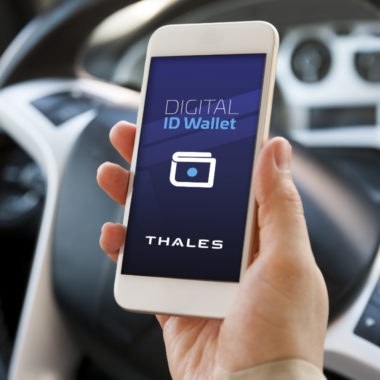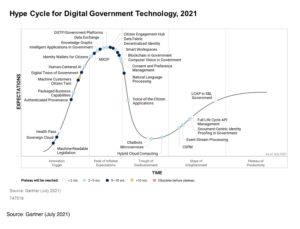Why is Digital ID needed now? Over the last 18 months, the digitalisation of public and private services has accelerated like never before. Due to limitations on physical contact and lockdowns around the globe, citizens – often out of necessity – have had to turn to the digital equivalent of services they previously accessed in person. From internet banking to filling out tax returns online, the pandemic has acted as a catalyst for a wholesale change in consumer behaviour.
Even as we start to return to a sense of normality, this digitalisation of services looks set to gather momentum. This is, in part, due to governments around the world asking their citizens to carry digital health passes to prove they are doubly vaccinated or have a negative test before they can access certain services. As a recent example of this, the UK government made proof of ‘full vaccination’ a requirement for entering nightclubs from September and countries like Italy or France are following a similar path.
So-called digital ‘vaccination passports’ will play a key role in enabling citizens to access all manner of services and will act as a precursor to the rollout of mobile digital ID.
A gateway to other government services
In some regions, the deployment of Digital ID wallets and modernisation of once analogue services is already well underway. Florida, for example, is about to provide mobile Driving Licenses to its citizens as it aims to develop more convenient and secure identification methods. The same is true of Queensland in Australia, where the state’s first Digital License App was recently piloted before deployment.
In both cases, the deployment of a digital ID wallet – primarily for digital driving licenses – will act as a gateway and the foundations for other vital government services, such as health passes.
Meeting the EU digital ID wallet ambitions
In June this year, the European Union took a step towards one of the largest digital identity projects ever when it proposed a framework for a Europe-wide Digital Identity. This would be available for all EU citizens, residents and businesses in the EU.
The ambition is huge; both in terms of scale – as it applies to all EU member states – and also in the power it would grant to citizens throughout the Bloc. For the first time, citizens would be able to use a European Digital Identity wallet, from their phone, that would give them access to services in any region across Europe.
It will also help governments to carry out modernisation projects across public sector departments as they digitise to match the capabilities of these virtual identities.
The wallet would, in essence, transform access to government services for EU citizens. It would be based on some key principles:
- Enabling citizens to prove who they are: The ability to prove who you are is something many of us take for granted, but without an identity, you’d be surprised at how difficult it is to access basic services like healthcare. The foundation of proving your identity is trust and the EU Digital ID Wallet will help citizens prove who they are at the click of a button. Public and private organisations can also be confident that the ID is authentic.
- Security first approach: One of the key principles of the digital wallet is its approach to security. At the core of the wallet are cybersecurity protocols which protect the device’s EU sovereignty, amongst other things. Citizen’s expectations for mobile security are high which is why the deployment of regional mobile wallets will have to take a layered security approach. This means that potential hackers would encounter different security measures in every part of the wallet. Ensuring this level of security is a priority for markets wishing to address consumer fears as well as ensuring strong take-up of the EU Digital Identity.
- Multiple documents in one place: The digital wallet is convenient as it can hold multiple documents in a single place
- – instead of citizens having to carry around wallets bulging with cards. Even more interesting when you think that 90% of users have a mobile device in reach at all times.
- Combining payment and identity: It gets really exciting when you realise that the wallet can host both digitalised identity and payment credentials. This could allow people, for example, to pay a deposit on a new apartment or settle an outstanding speeding fine directly from their smartphone.
- Allowing digital signatures: Digital wallets can manage digital signatures, enabling contracts to be signed and accepted at the convenience of the user (for the apartment, they’re in the process of buying for example).
- Built with data privacy in mind: People are increasingly wary of how their data is being used. Digital wallets can help address these concerns in a couple of ways through security and transparency of data use; firstly, citizens can choose which information they show businesses and organisations. Need to prove your ID at a bar? You can just show your date of birth without having to share your address. Secondly, the Digital ID will comply with EU data principles (GDPR) ensuring data minimisation, data protection and privacy rights management.
- Cross-border identity: Last but certai
nly not least, the EU Digital Identity will allow citizens to use their documentation across the entire region. Each member state will be responsible for providing their own citizens with a wallet, but these will become universally accepted wherever people are across the European Union. This should allow citizens to access government services of any member state just as they do at home, heavily reducing extra costs and complexity.
In order to meet the EU target of 80% of its citizens using eIDs by 2030, it’s vital that governments address these pillars and work with a provider that can satisfy these requirements.
If they do, the impact on people and how they access services has the potential to be truly transformative and will usher in a period of accelerated digitisation for governments across Europe.




